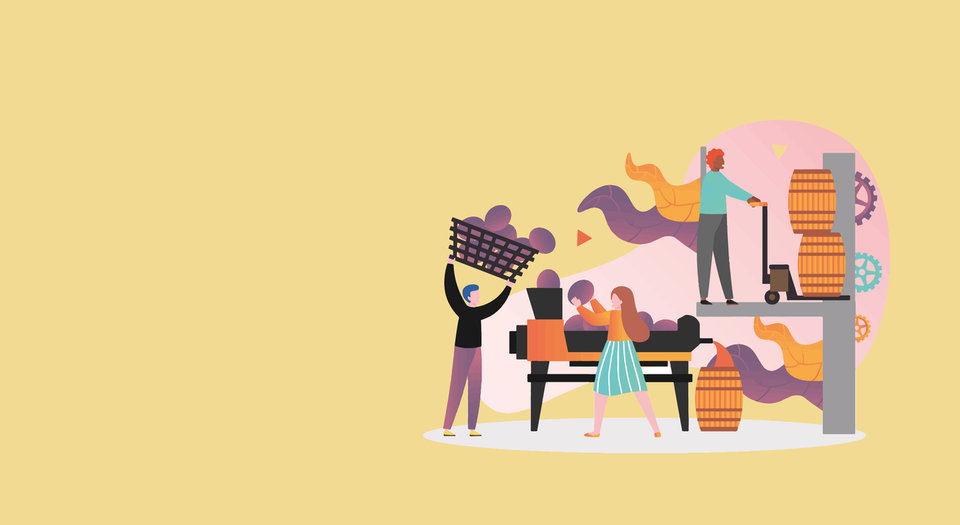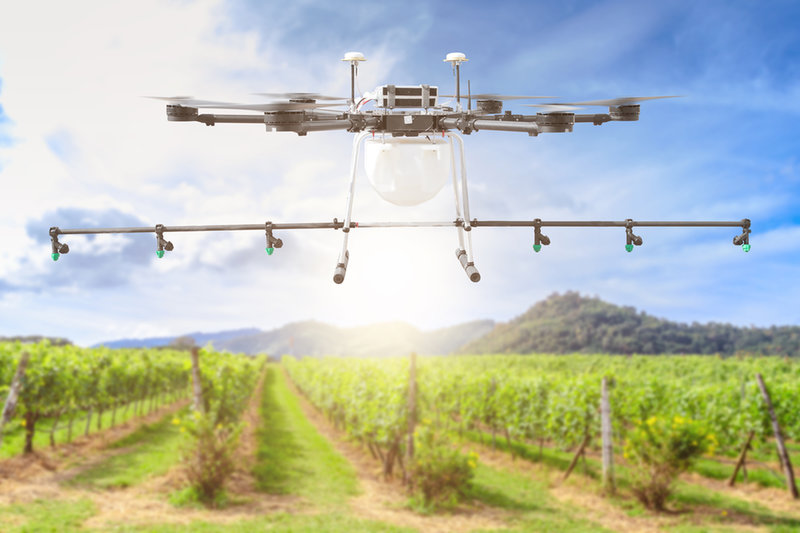
Wine | Tech
Technology in the vineyard
With necessity long being the mother of invention, the Covid-19 pandemic has brought outlying technology into the mainstream, and at speed. Chris Losh has seen similar leaps and bounds at the production end of the wine industry.
A
t the end of the 18th Century, Napoleon issued a challenge to his countrymen: to come up with a way of preserving food so that his armies could carry their provisions with them. That way, they wouldn't need to rely on the land – and the people – they'd just invaded to sustain them.
To sharpen the would-be inventors' focus, Napoleon put up a 12,000 Franc reward, which was pocketed 15 years later by a confectioner, who discovered that food didn't go off if you boiled it and put it in airtight jars.
The point is that Napoleon's ambitions created a need for something that didn't yet exist but that technology was just about at the point of being able to provide. All it needed was a reason; an incentive.
If Covid-19 has shown us one thing, it's how adaptable humans can be. Whether it's social distancing, curfews, or facemasks, it's surprising how soon the strange or unthinkable can become the norm. And, how quickly.
Accelerated technological transformation
Thanks to the pandemic, developments that might have previously taken five years have been conceived, rolled out, and normalised in a fraction of that time. One IT company says that it's seen more digital transformation in the last six months than in the previous ten years. I'd imagine that this will have an impact on what we can expect to see in vineyards, too.
Historically, much of the innovation in the vines has been either chemical, in the form of herbicides, or mechanical – tractors, pickers and the like. I'm sure they won't be exempt from the sheer wave of technological changes that have engulfed pretty much every other aspect of human existence.
There are four developments that I've picked up on over the last year that I think are worth following with some interest.
Developments to keep an eye on
The first is a French shipping firm that has started using ethanol distilled from grape pomace as fuel for two of its seven plants. The company has further plans to work with trucking firms that are able to run their vehicles off the same second-generation bio-ethanol.
It's not, perhaps, as glamorous and bucolic as 'closed circle' biodynamic viticulture, but it's probably even more dramatic in reducing carbon emissions. And, with a lot of crisis distillation in the offing for this year, I'd expect we could see more of this.
The 'greening' of vineyards has been a huge, and growing, trend over the last decade. Most of the developments have focused on natural alternatives to chemical intervention. I was intrigued, though, to read recently about a 'robot' that zaps powdery mildew with ultraviolet (UV) light.
Made of two panels of tanning tubes that straddle the vines, one on each side, it trundles down rows at a stately 1.5m a second. By doing it at night, when the fungus is at its weakest, a small dose of UV is enough to knock out most of the bad stuff without damaging the vines. The creators claim it's more effective than classic fungicidal treatments.
Also going down the 'waves and panels' route is an anti-frost treatment. Inspired by the medical world, it uses panels to emit infrared waves that gently warm up vines and prevent them from freezing without changing the ambient air temperature.
Effective down to temperatures of -15°C, tests are still ongoing, but the treatment has the advantage of being both more precise and cheaper to implement than current alternatives. If it can help prevent events such as the 'Great European Frost Disaster' of 2017, it will be worth it.

The final technology to catch my eye is drones. Experimentation is already well advanced with using them for spraying. And, while they're not currently as fast or effective as a towed sprayer, results suggest they are better than a human with a backpack. It's likely that drones could provide a workable solution for steep or inaccessible vineyards.
What these three vineyard treatments have in common is that they're using new ideas to address problems that are as old as the hills. At the same time, the solutions they may be able to provide are more targeted and less damaging to the environment. They could reduce the use of tractors, lessen soil compaction, and minimise damage to the ecosystem through heavy, indiscriminate spraying and fuel use.
The thought of seeing tech in the vineyard, not just in the winery, might seem odd. However, it probably shouldn't. After all, tractors would once have been as new and strange as food in a can.